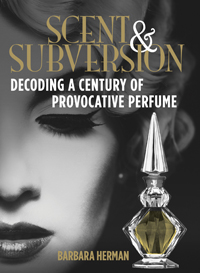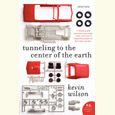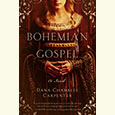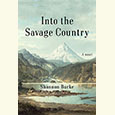Perishable, Pleasurable Relics
Barbara Herman surveys the complex delights of vintage perfume in Scent & Subversion
Humans have been concocting wearable fragrance for millennia, but perfume as a branded, mass-produced luxury item is largely a twentieth-century invention, and like so many of the innovations of the past hundred years, it has evolved with head-spinning rapidity. Thanks to a variety of factors, including both changing tastes and creeping government regulation, the perfumes on today’s department-store shelves bear little resemblance to the great Guerlains, Chanels, Carons, and Cotys our grandparents and great-grandparents enjoyed. Those classic perfumes, with their abundance of natural ingredients and often startlingly sensual character, have become perishable relics of the not-too-distant past, according to Barbara Herman, and they reveal “through their liquid language how women and men lived, what they aspired to, and what was forbidden to them.” In Scent & Subversion: Decoding a Century of Provocative Perfume, Herman describes more than 300 of these great modern fragrances, from wistful L’Heure Bleue to unapologetically animalic Muscs Koublaï Khän, and muses on how something so seemingly frivolous as a bottle of scent has the power to move us deeply.
 As the title indicates, Scent & Subversion emphasizes the sexy, transgressive side of scent. It might surprise today’s fans of light, clean perfume to learn that quite a few of the fragrances now regarded as fusty and old-fashioned were designed to be not just alluring, but frankly sexual. Tabu, first produced in 1932, was supposedly conceived as “a perfume a prostitute would wear,” and Bandit, introduced in 1944, was inspired, according to Herman, when perfumer Germaine Cellier “took a whiff of models changing their undergarments” backstage at a fashion show. Even the more genteel or abstract vintage creations—Chanel No. 5, for instance—are, to the initiated nose, richly sensual in a way that most contemporary scents simply are not.
As the title indicates, Scent & Subversion emphasizes the sexy, transgressive side of scent. It might surprise today’s fans of light, clean perfume to learn that quite a few of the fragrances now regarded as fusty and old-fashioned were designed to be not just alluring, but frankly sexual. Tabu, first produced in 1932, was supposedly conceived as “a perfume a prostitute would wear,” and Bandit, introduced in 1944, was inspired, according to Herman, when perfumer Germaine Cellier “took a whiff of models changing their undergarments” backstage at a fashion show. Even the more genteel or abstract vintage creations—Chanel No. 5, for instance—are, to the initiated nose, richly sensual in a way that most contemporary scents simply are not.
As for many connoisseurs of vintage perfume, it was just this voluptuous quality that drew Herman to explore fragrances that had their heyday before she was born. Bored with her office job, she began “looking for the rude, the louche, and the difficult,” she writes. “I wanted an anti-office scent, a perfume that would flip office culture the bird and throw a smelly Molotov cocktail through the window for good measure.” Her pursuit of the oldies was also spurred by knowing that the remnants of long-discontinued fragrances are inevitably decaying, soon to be lost forever, and that even those classics still in production are being radically reformulated, thanks to recent regulations banning or limiting some of their essential ingredients.
 Herman’s obsession led first to her blog, Yesterday’s Perfume, and then to Scent & Subversion, which catalogs nearly every important perfume of the past century. Herman is a smart, witty writer, and her descriptions of the scents are generally dead on. Describing a smell, especially a complex, multilayered smell, is no easy task, and the ability to do it with clarity and style is a rare gift, as a quick tour of the scads of perfume blogs will confirm. Herman dutifully reports the notes and general character of each perfume, but her genius is for the apt image and metaphor. Ivoire is like “a Mark Rothko painting meditating on white”; Liù’s “subtly fresh neroli note keeps the entire perfume from sinking into a decadent stupor, but not by much.” Herman’s text is complemented by scores of vintage perfume ads, beautiful in themselves and a telling glimpse into the kind of fantasies marketers were hoping to sell.
Herman’s obsession led first to her blog, Yesterday’s Perfume, and then to Scent & Subversion, which catalogs nearly every important perfume of the past century. Herman is a smart, witty writer, and her descriptions of the scents are generally dead on. Describing a smell, especially a complex, multilayered smell, is no easy task, and the ability to do it with clarity and style is a rare gift, as a quick tour of the scads of perfume blogs will confirm. Herman dutifully reports the notes and general character of each perfume, but her genius is for the apt image and metaphor. Ivoire is like “a Mark Rothko painting meditating on white”; Liù’s “subtly fresh neroli note keeps the entire perfume from sinking into a decadent stupor, but not by much.” Herman’s text is complemented by scores of vintage perfume ads, beautiful in themselves and a telling glimpse into the kind of fantasies marketers were hoping to sell.
Lest we think all the brave days of perfumery are behind us, Herman devotes several brief sections of Scent & Subversion to some present-day scent artists who are ignoring the boundaries of both fashion and tradition to shape new notions of olfactory pleasure. She profiles Christopher Brosius, founder of CB I Hate Perfume, who creates “real world” fragrances that evoke everything from dirt to old books, and she takes us along on her funny, unsettling first encounter with Sécrétions Magnifiques, a fragrance from Etat Libre d’Orange that smells like “Funk. Spunk. Spit. Sweat. Not musky sweat, but rather sweet-sour, fresh, metallic sweat. And that leering floral! This perfume is leering at me. Someone please make it stop.” Even Germaine Cellier might be impressed.
Although Scent & Subversion contains plenty to interest the veteran perfume aficionado, it seems designed with the relative newbie in mind. Herman offers tips on how to train your nose to recognize and appreciate the different categories of perfume (chypre, floral, fougere, etc.), and she provides some helpful advice on how to navigate the marketplace of Internet sellers who serve as a principal source for most collectors. The book does not generally go into detail about the different iterations of many classics that are floating around, and it’s not an exhaustive source for the serious collector, but it is an outstanding survey. There is more than enough information and entertainment here to get even a casual perfume fiend started on his or her own vintage quest.

Maria Browning is a fifth-generation Tennessean who grew up in Erin and Nashville. A graduate of Mount Holyoke College, she has attended the Clothesline School of Writing in Chicago, the Moss Workshop with Richard Bausch at the University of Memphis, and the Sewanee Writers’ Conference. She lives in White Bluff.


